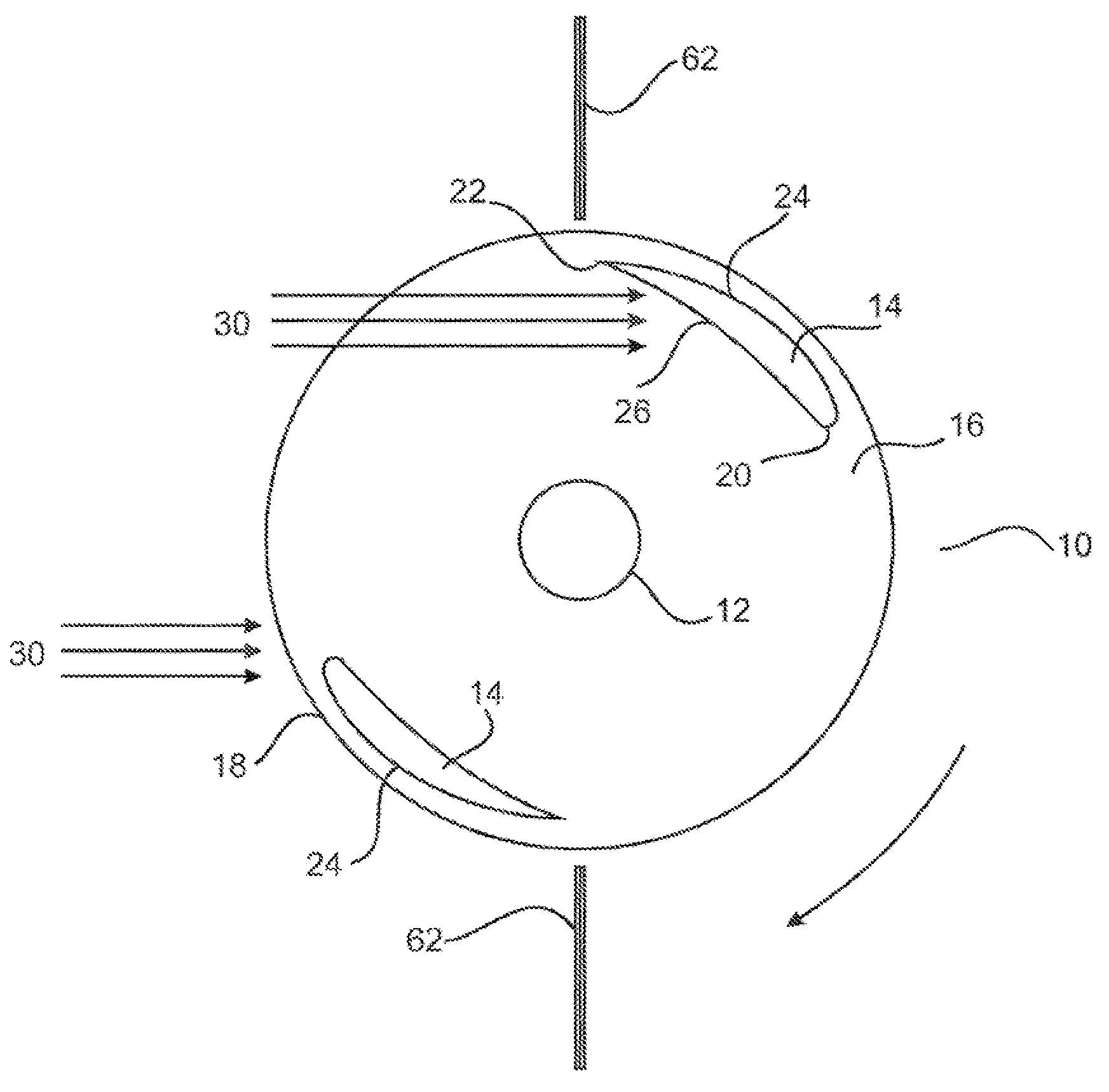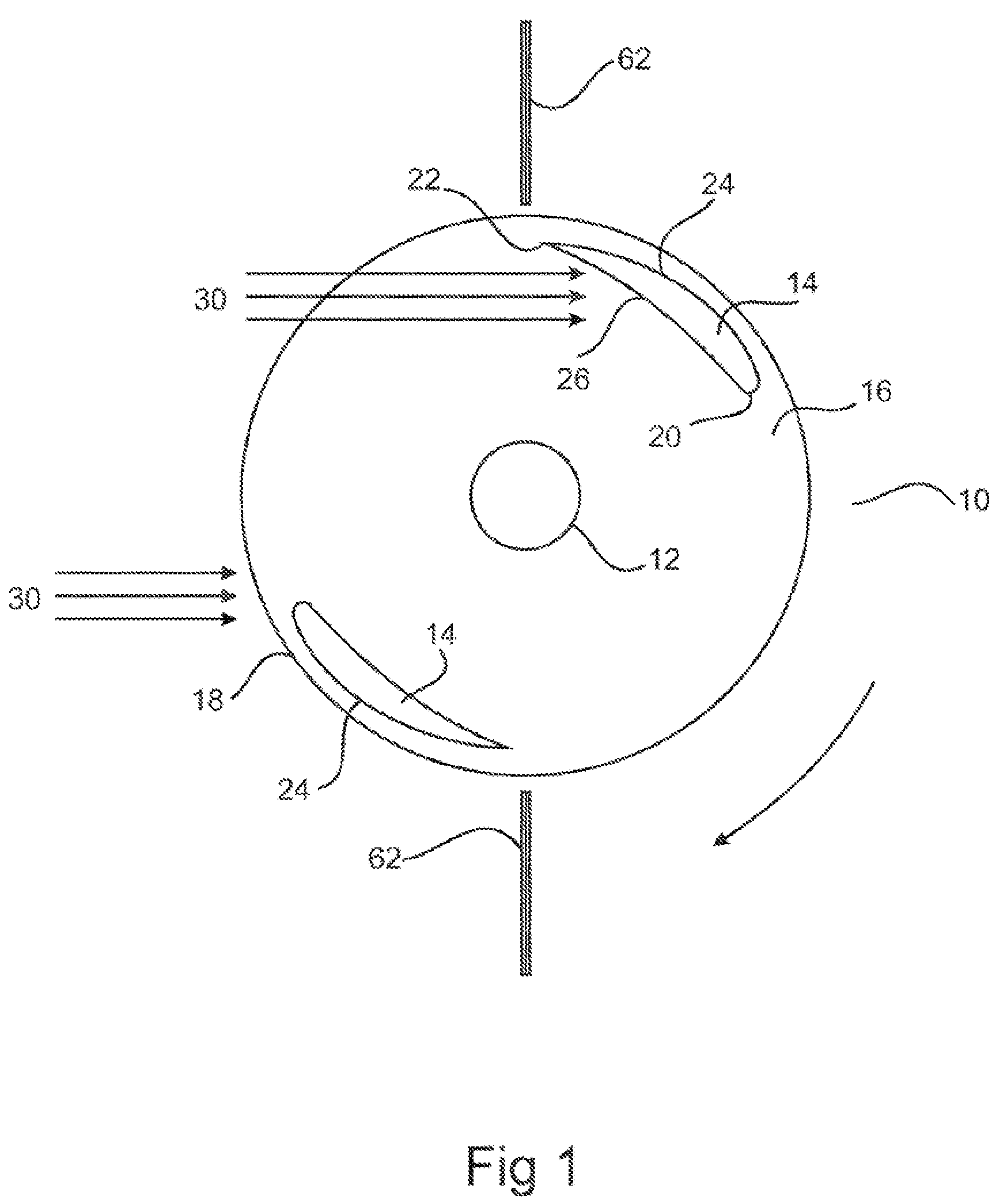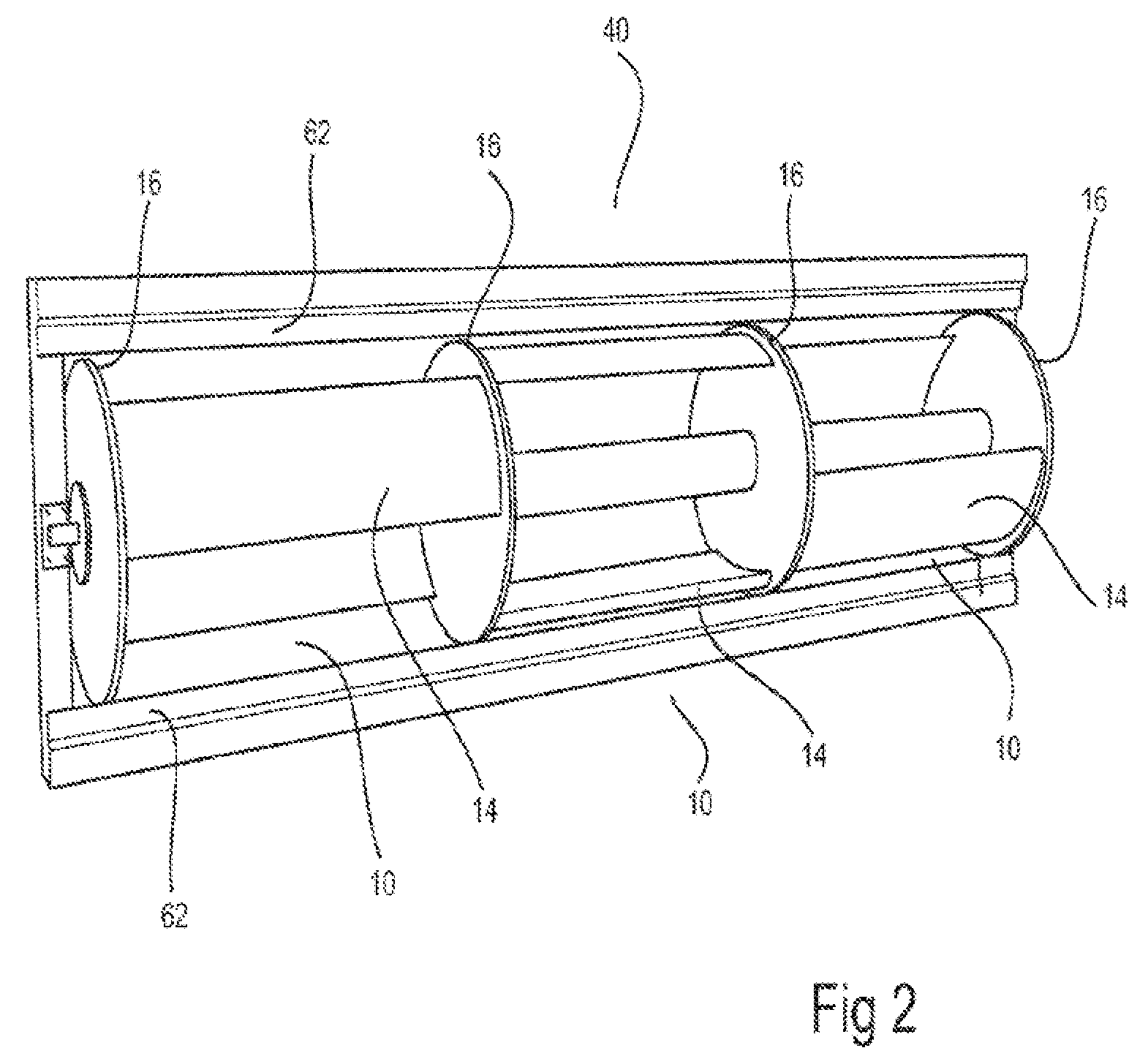Wind turbine
a wind turbine and turbine blade technology, applied in vessel construction, renewable energy generation, greenhouse gas reduction, etc., can solve the problems of turbine start-up, various problems, and drag-type blades are necessarily limited to travelling slower
- Summary
- Abstract
- Description
- Claims
- Application Information
AI Technical Summary
Benefits of technology
Problems solved by technology
Method used
Image
Examples
Embodiment Construction
[0031]FIG. 1 shows a cross-section of a wind turbine unit 10. The wind turbine unit 10 of this embodiment has an axle 12 located about a central axis, two blades 14 and two end plates 16.
[0032]The end plates 16 are parallel, circular, and centred around the axle 12. In cross section they define an outer circumference 18 of the wind turbine unit 10. The distance from the central axis to this outer circumference can be considered the turbine radius.
[0033]The turbine unit 10 has a first end plate 16 and a second endplate 16, which are axially spaced and act to define a first axial end and a second axial end of the turbine unit 10. Turbine blades 14 extend between the first and second end plates 16. As the end plates 16 rotate about the axis, the blades 14 thus also rotate about the axis.
[0034]The blades 14 are diametrically opposed about the axle 12. Each blade 14 has a leading edge 20 and a trailing edge 22, connected by an outer surface 24 and an inner surface 26. The blade 14 has an...
PUM
 Login to View More
Login to View More Abstract
Description
Claims
Application Information
 Login to View More
Login to View More - R&D
- Intellectual Property
- Life Sciences
- Materials
- Tech Scout
- Unparalleled Data Quality
- Higher Quality Content
- 60% Fewer Hallucinations
Browse by: Latest US Patents, China's latest patents, Technical Efficacy Thesaurus, Application Domain, Technology Topic, Popular Technical Reports.
© 2025 PatSnap. All rights reserved.Legal|Privacy policy|Modern Slavery Act Transparency Statement|Sitemap|About US| Contact US: help@patsnap.com



